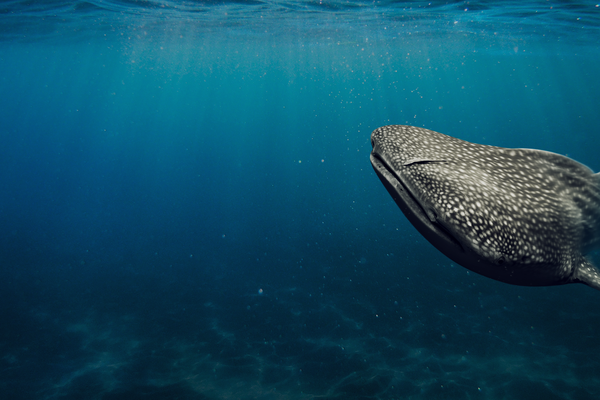Plastic in our oceans is killing marine mammals

© naturepl.com / Franco Banfi / WWF
This article was originally published by WWF-Australia.
A gentle ocean giant who feeds in the deep gets stranded on a Spanish beach and dies.
This is what plastic can do to the world’s largest predator - the sperm whale.
Cause of death? An inflammation of its abdominal tissues caused by the presence of nearly 30 kilograms of indigestible plastic. Among the items recovered in its gut were shopping bags, fishing nets and a jerry can.
Sadly, marine mammals around the world are suffering similar fates.
But why?
How does plastic affect marine life?
Globally, 100,000 marine mammals die every year as a result of plastic pollution. This includes whales, dolphins, porpoises, seals and sea lions.
There are two principle ways that encountering marine debris can be fatal for these creatures: ingestion (eating) or entanglement in plastic-based fishing gear.

© WWF-Australia
Why do marine mammals eat plastic?
It’s estimated that 56% of the planet’s whale, dolphin and porpoise species have consumed plastic, but to understand why you need to see the world as they do.
A plastic bag ballooned with water can look a lot like squid, or other prey, to the seals and marine mammals that hunt them.
Even species that don't identify prey by sight aren’t safe. Toothed whales, and many species of dolphin, use a sophisticated sonar-type technique called echolocation to find their prey. Some scientists believe that unnatural objects such as plastic waste confuse this sonar, and are incorrectly interpreted as food.
It’s possible that such a mistake led to the death of a pregnant pygmy sperm whale discovered stranded on a beach near Melbourne. This whale was euthanised after unsuccessful rescue attempts, and an autopsy revealed a stomach clogged with ingested plastic.
What happens when marine mammals get entangled in plastic?
The other way that plastic pollution effects ocean mammals is through entanglement, and one of the worst offenders here is abandoned fishing gear.
An estimated 640,000 tonnes of the eight million tonnes of plastic that enters the oceans every year is so-called ghost fishing equipment, gear that’s either deliberately jettisoned or washed from ships or shorelines.
Left to float in the ocean it continues its deadly purpose, ensnaring unwary marine creatures who venture too close.
Just like us, marine mammals can’t breathe underwater, and the most common way that entanglement kills is through drowning.
The results from recovered ghost nets are devastating, and show that it isn’t only mammals that are at risk. Here are the combined contents of two ghost nets taken from the waters around the Tiwi Islands and Darwin respectively:
- Three skeletons believed to be dolphins.
- Three dolphinfish (mahi-mahi).
- Two turtles.
- Nine blacktip reef sharks.
- Numerous reef fish.
Even if the animals are able to move while entangled, their prospects aren’t good.
Rare species such as the humpback dolphin, which is only found in waters around Australia and New Guinea, have been observed with marine debris wrapped tightly around their bodies. If the plastic isn’t dislodged, it can cut deep into their skin, leaving the animals open to the risk of deadly infections.
How you can you help?
Marine mammals, of course, don’t understand the dangers plastics pose to them. This problem was created by humans, and only humans can fix it.
Every year Australia dumps 130,000 tonnes of plastic into its oceans, and this goes on to indiscriminately kill marine mammals, birds and other creatures.
Turning this tide starts at an individual level:
- Recycle everything you can.
- Use your own cutlery, food containers and KeepCups when getting takeaway, rather than using disposable alternatives.
- Participate in beach or community clean-ups.
- Tell the waiter to ‘hold the straw’ when purchasing drinks.
Most importantly, pledge to #ReduceYourUse today.










